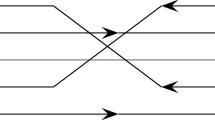Abstract
In many practical applications, the performance of a learning algorithm is not actually affected only by an unitary factor just like the complexity of hypothesis space, stability of the algorithm and data quality. This paper addresses in the performance of the regularization algorithm associated with Gaussian kernels. The main purpose is to provide a framework of evaluating the generalization performance of the algorithm conjointly in terms of hypothesis space complexity, algorithmic stability and data quality. The new bounds on generalization error of such algorithm measured by regularization error and sample error are established. It is shown that the regularization error has polynomial decays under some conditions, and the new bounds are based on uniform stability of the algorithm, covering number of hypothesis space and data information simultaneously. As an application, the obtained results are applied to several special regularization algorithms, and some new results for the special algorithms are deduced.
Similar content being viewed by others
References
Aronszajn N (1950) Theory of reproducing kernels. Trans Am Math Soc 68:337–404
Bartlett PL (1998) The sample complexity of pattern classification with neural networks: the size of the weights is more important than the size of the network. IEEE Trans Inf Theory 44:525–536
Bousquet O, Elisseeff A (2002) Stability and generalization. J Mach Learn Res 2:499–526
Bousquet O (2003) New approaches to statistical learning theory. Ann Inst Stat Math 55:371–389
Boser H, Guyon I, Vapnik V (1992) A training algorithm for optimal margin classifiers. Proc Fifth Annu Workshop Comput Learn Theory 5:144–152
Chang XY, Xu ZB, Zou B, Zhang H (2011) Generalization bounds of regularization algorithms derived simultaneously through hypothesis space complexity, algorithmic stability and data quality. Int. J. Wavel Multiresolut Inf Process 9:549–570
Chen DR, Wu Q, Ying YM, Zhou DX (2004) Supprot vector machine soft margin clssifiers: error analysis. J Mach Learn Res 5:1143–1175
Cortes C, Vapnik V (1995) Support-vector networks. Mach Learn 20:273–297
Cuker F, Smale S (2001) On the mathematical foundations of learning. Bull Am Math Soc 39:1–49
Cuker F, Smale S (2002) Best choices for regularization parameters in learning theory: on the bias-variance problem. Found Comput Math 2:413–428
Cucker F, Zhou DX (2006) Learning theory: an approximation theory viewpoint. Cambridge University Press, Cambridge
Devroye L, Wagner T (1979) Distribution-free performance bounds for potential function rules. IEEE Trans Inf Theory 25(5):601–604
Evgeniou T, Pontil M (1999) On the V-gamma dimension for regression in reproducing kernel Hilbert spaces, in proceedings of algorithmic learning theory. Lecture Notes Comput Sci 1720:106–117
Kearns M, Ron D (1999) Algorithmic stability and sanity-check bounds for leave-one-out cross-validation. Neural Comput 11:1427–1453
Kutin S, Niyogi P (2002) Almost-everywhere algorithmic stability and generalization error, Tecnical Report TR-2002-03. Department of Computer Science, The University of Chicago, Chicago
Martinand A, Bartlett PL (1999) Neural network learning: theoretical foundations. Cambridge University Press, Cambridge
Poggio T, Girosi F (1990) Regularization algorithms for learning that are equivalent to multilayer networks. Sci New Ser 247:978–982
Smale S, Zhou DX (2004) Shannon sample and function reconstruction from point values. Bull Am Math Soc 41:279–305
Steinwart I, Hush D, Scovel C (2006) An explicit description of the reproducing kernel Hilbert spaces of Gaussian RBF kernels. IEEE Trans Inf Theory 52:4635–4643
Vapnik V, Chervonenkis A (1971) On the uniform convergence of relative frequencies of events to their probabilities. Theory Probab Appl 16:264–280
Vapnik V (1998) Statistical learning theory. John Wiley, New York
De Vito E, Caponnteeo A, Rosasco L (2005) Model selection for regularized least-squares algorithm. Found Comput Math 5(1):59–85
Wu Q, Zhou DX (2005) SVM soft margin classifiers: linear programming versus quadratic programming. Neural Comput 17:1160–1187
Xiang DH, Zhou DX (2009) Classification with Gaussians and convex loss. J Mach Learn Res 10: 1447–1468
Zhou DX (2002) The covering number in learning theory. J Complex 18:739–767
Zou B, Li LQ, Xu J (2005) The bounds on the rate of uniform convergence for learning machine. Lect Notes Comput Sci 3496:538–545
Acknowledgments
This research was supported by the National Natural Science Foundation of China (Nos. 61272023, 61101240) and the major program of National Social Science Foundation of China (No. 11&ZD156).
Author information
Authors and Affiliations
Corresponding author
Rights and permissions
About this article
Cite this article
Cao, F., Liu, Y. & Zhang, W. Generalization Bounds of Regularization Algorithm with Gaussian Kernels. Neural Process Lett 39, 179–194 (2014). https://doi.org/10.1007/s11063-013-9298-5
Published:
Issue Date:
DOI: https://doi.org/10.1007/s11063-013-9298-5




